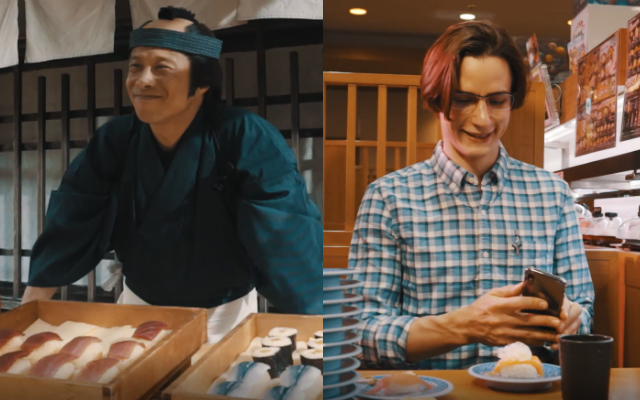
Source: Edo-Tokyo Museum YouTube
Watch How the Edo Period Shaped Today’s Tokyo with Video Celebrating Edo-Tokyo Museum’s Reopening
Sponsored Content
- Sponsored by:
- Edo-Tokyo Museum
- Tags:
- Edo Period / History / Museum / Ryogoku / Tokyo

Source: Edo-Tokyo Museum YouTube
In the historical sumo area of Ryogoku, there’s an odd piece of architecture.
Although it might look like something out of Star Wars, this building is actually the Edo-Tokyo Museum, the go-to place in central Tokyo for everything Edo. After a temporary six month closure, it's opening its doors once more for history, art and culture buffs to enjoy. New exhibitions, shops and restaurants will also be open for the first time.
Edo is the old name for Tokyo, and the name of the period when the city became the capital of Japan. The Edo-Tokyo Museum opened in 1993 as a place where visitors could experience the history and culture of the Edo period, and gain a deeper understanding of life during that time.
To promote the events surrounding the reopening, the museum has released a fascinating video which compares aspects of Edo society to how they have progressed and continued into the modern world over 400 years later.
The video gives viewers an insight into every day life in Edo and how the aesthetics and sense influences us even today. Examples are given such as the low wooden clogs that were popular which the town girls of that period. The influence of this Edo fashion trend can be clearly seen in the modern heel-less shoes, a Japanese designer's work that was famously worn by Lady Gaga.
Another example is the sushi stands that popped up around Edo as eating out became popular. This translates into today's conveyor belt sushi, an enduring image of Japan's cuisine.
During the Edo period when feudal lords would pass through the town, the procession would take the form of an orderly line. Similarly these days, Tokyo residents queue for the train and enter in an orderly fashion.
As a time of prosperity, the Edo period is associated with the flurry of art and performances that came out of the era. In particular the art movement known as Ukiyo-e, paintings and woodblock prints that portray the fleeting beauty of the world. As such, the Edo-Tokyo museum will be exhibiting works of Ukiyo-e masters. In honour of the building's reopen, “Reflective Love” by Kitagawa Utamaro will be on display. "Ichikawa Ebizo" by Toshusai Sharaku will be on display for the first time ever at Edo-Tokyo Museum. A must-see for Japanese traditional art lovers.
Left: "Ichikawa Ebizo" by Toshusai Sharaku. Right: “Reflective Love” by Kitagawa Utamaro
Ukiyo-e Best Collection Exhibition, 'Eye of Sharaku, Koisuru Utamaro'
April 1st - May 6th
There will be talks and traditional performances during 1st and 7th April as part of the reopening events called Edo Tokyo Vision. The live performances will include the chance to see traditional Japanese arts such as shamisen playing and rakugo. There will also be a temporary exhibition named 'O-Edo' which details the founding of Edo with historical artifacts.
Events
April 1st (Theme: Aesthetic Sense)
14.00-15.30 Live performances and talk
April 7th (Theme: Sustainable Living)
14.00-15.50 Rakugo (comedic storytelling) and talk
April 1st - May 13th NHK Special Exhibition 'O-Edo'
Event Information
The entrance charge to the museum is only 600 yen, so if you're a Japanese history and art lover or just in the area of Ryogoku for the day, get ready to fully immerse yourself in Edo culture at the Edo-Tokyo Museum.
Address: 1-4-1 Yokoami, Sumida-ku, Tokyo 130-0015
Access: 3-minute walk from West Exit of Ryogoku Station, JR Sobu Line
1-minute walk from A4 Exit of Ryogoku Station (Edo-Tokyo Hakubutsukan-mae), Toei Subway Oedo Line
Website
Sponsored by Edo-Tokyo Museum